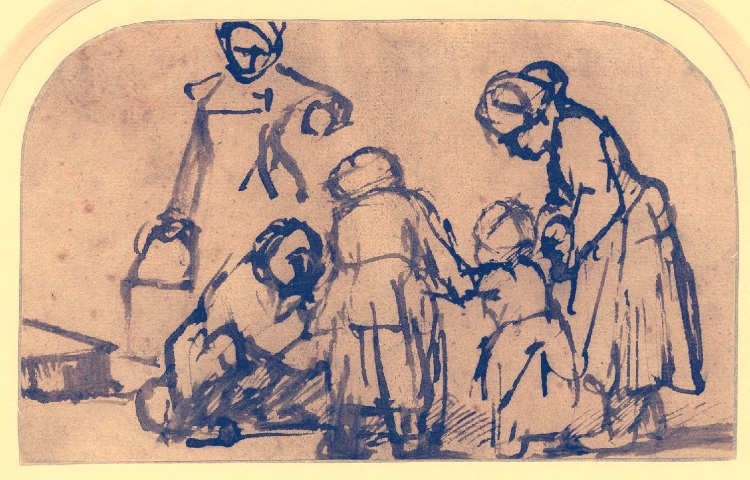“When in the presence of a child, get on the floor. Or else bend down until your own and the child’s eyes meet.”
– Zadie Smith, Intimations
In 1896, Maria Montessori was twenty-six years old, and the first woman to graduate from the University of Rome Medical School. She was employed at the Orthophrenic Clinic, a municipal asylum for the “deficient and insane” children of the city—today, they would be diagnosed as having autism or other learning disabilities.
At the time, they were: “disgusting,” and locked in barren rooms, orphans or orphaned by parents too overworked and poor. Nurses and the occasional physician scorned and neglected these “filthy” children who “would throw themselves on the floor looking for breadcrumbs after meals.” Montessori, the first female doctor in Italy, got down on the floor too, to see,
that they had nothing to play with. The crumbs were something, anything.
The children were starving, for stimulation, purpose. She gave them strings and beads; they learned to thread them. Blocks; they built towers and spent hours sliding wooden cylinders in holes. Reeds; they watched her first, and before long had learned to weave baskets.
The facility was severely understaffed; Montessori taught the older children to care for the others. They also helped with lunch. Two years later, these mentally “deficient” children were making and serving meals, gardening, caring for animals,
and reading, writing, passing public school tests. And happier. On that floor in that asylum, Maria Montessori had imagined a different mode of education; one in which children were free, in a safe environment, and seen.
In 1656, Rembrandt van Rijn sketched what has been called “the single greatest drawing ever made:”
Two girls—a mother and sister, probably—seen from behind, hold a small boy by the arms. He totters toward his father. The man is crouching, almost seated, on the floor, arms outstretched. Behind him, a woman looks at the scene, holding a pail.
A very small drawing, pen and brown ink on cream paper, that hangs and is often passed by at the British Museum. But no, look,
“… for instance at those whisking marks on the head and shoulders of the girl in the center, the older sister, probably made with the other side of the pen, which let you know that she is craning, turning anxiously to look at the baby’s face to make sure he’s okay.
Or how the mother, on the other side, holds him up in a slightly different, more experienced manner. The astonishing double profile of her face, to either side of the mark.
The face of the baby: how even though you can’t see it, you can tell he is beaming.”
The father looks like he is beaming too, hunched forward, his eyes two large blobs of ink.
“This mountain of figures, and then, to balance it all, the passing milkmaid, how you can feel the weight of the bucket she carries in the extension of her opposite arm.”
The pail is brimming with milk, obviously heavy. Still, she stopped.
“This is not just a picture of a caring little family, it’s Rembrandt’s account of seeing them.” A virtuoso drawing because “the depiction of human tenderness came first,”
of a scene so common and cosmically beautiful, and so easy to miss.
Most children will learn to walk. Most children, eventually, will learn to talk, sing, argue, drink from actual cups, spill, use the potty (one hopes; on the latter, the jury is still out), zip coats, tie shoelaces, untie knots.
Children, then, will learn to walk away, talk back, not sing in public. Then, they may forget how get down on the floor and play, how it feels to be seen, and free, and safe. How the light, yesterday, fell, white and lilac, colouring their cheeks pink, streaking their hair hazelnut. How simply thrilling it was to put their shoes on themselves. And take them off.
